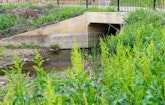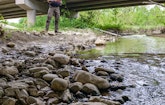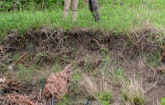
Sean Aucoin, Brandon Smith, Perry Harts and Chris Collins of the Frisco Stormwater Management Division stand near a restored creekbank.
(Photography by Olivia Ogren-Hrejsa)
In the first two decades of the 2000s Frisco, Texas, was swallowed up by the Dallas-Fort Worth metroplex, becoming both a corporate center — think Dallas Cowboys — and a bedroom community for commuters heading to one city or the other. From a population of 33,000 in 2000, according...










